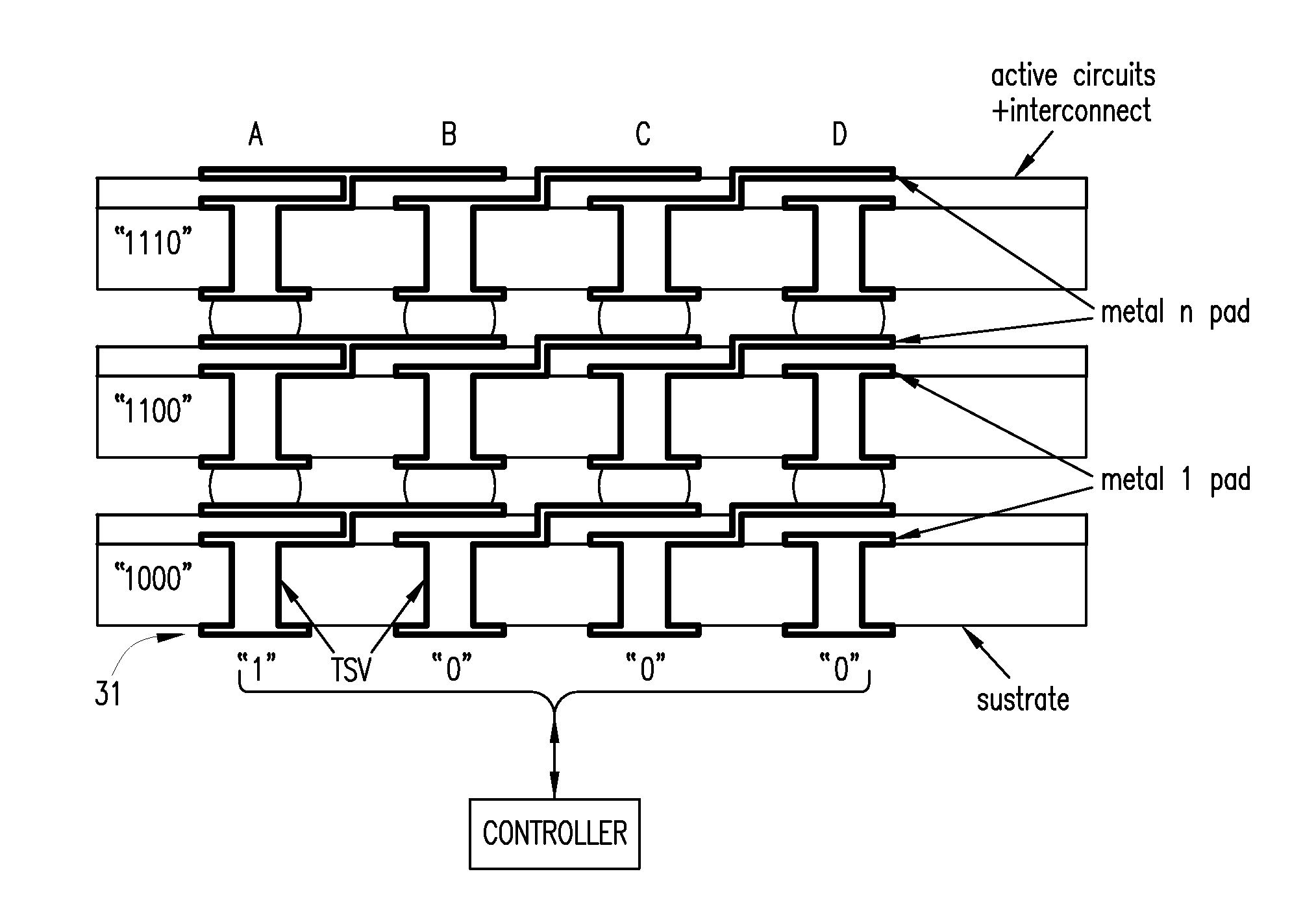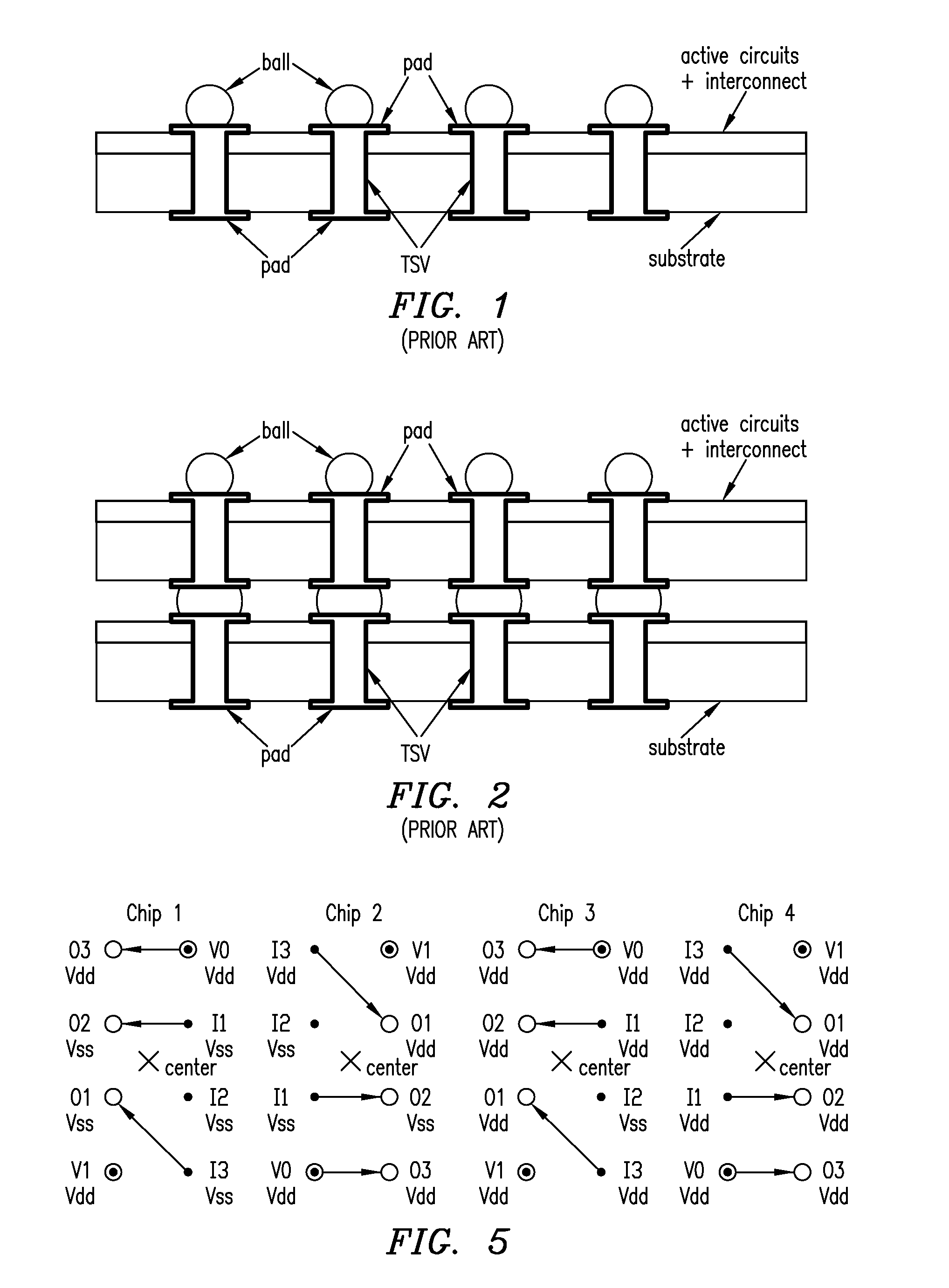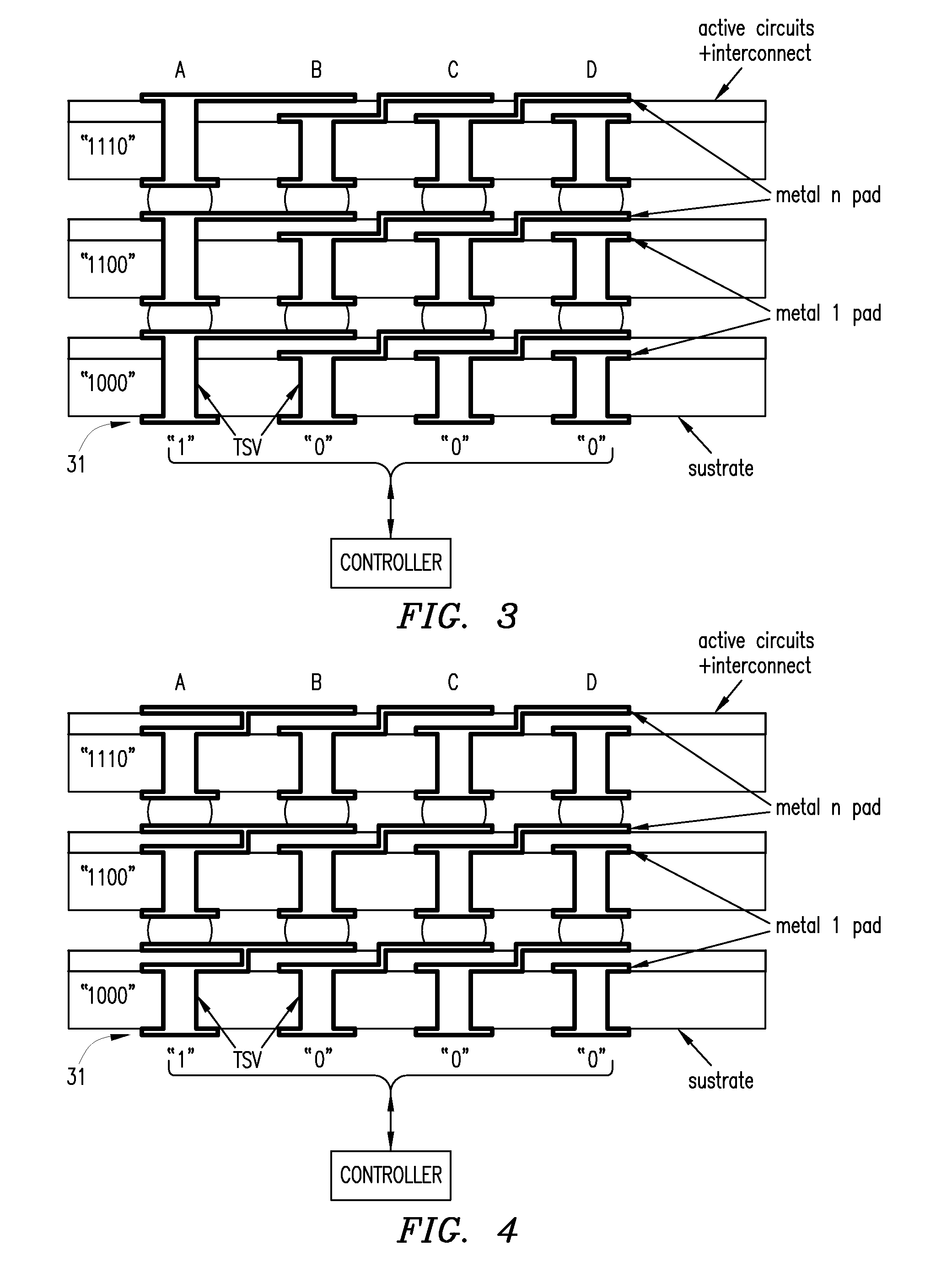Using interrupted through-silicon-vias in integrated circuits adapted for stacking
a technology of integrated circuits and silicon vias, applied in the direction of electrical equipment construction details, cable/conductor manufacturing, electrotherapy, etc., can solve the problems of tsvs having to be located symmetrically, stacking bussed memory chips remain,
- Summary
- Abstract
- Description
- Claims
- Application Information
AI Technical Summary
Benefits of technology
Problems solved by technology
Method used
Image
Examples
Embodiment Construction
Example embodiments of the present work use interrupted TSVs that provide serial connections through successive integrated circuit die in a stack without the need for die rotation. With an interrupted TSV, the connection between bottom pad and top pad is broken to allow connections other than direct (uninterrupted) vertical connections.
FIG. 3 shows an example of stacked chips interconnected using interrupted TSVs according to the present work to provide connections that are not direct vertical connections. The TSVs in position A are conventional uninterrupted vertical connections between a pad on the bottom surface of the die and the top metal layer, while the TSVs in positions B, C, and D are interrupted TSVs.
Within the active circuit and interconnect region of the chip there may be many conductive layers. Modern logic processes have 9 layers of metal interconnect or even more. The top metal layer is indicated here as metal n and the bottom layer as metal 1. In addition connections...
PUM
 Login to View More
Login to View More Abstract
Description
Claims
Application Information
 Login to View More
Login to View More - R&D
- Intellectual Property
- Life Sciences
- Materials
- Tech Scout
- Unparalleled Data Quality
- Higher Quality Content
- 60% Fewer Hallucinations
Browse by: Latest US Patents, China's latest patents, Technical Efficacy Thesaurus, Application Domain, Technology Topic, Popular Technical Reports.
© 2025 PatSnap. All rights reserved.Legal|Privacy policy|Modern Slavery Act Transparency Statement|Sitemap|About US| Contact US: help@patsnap.com



